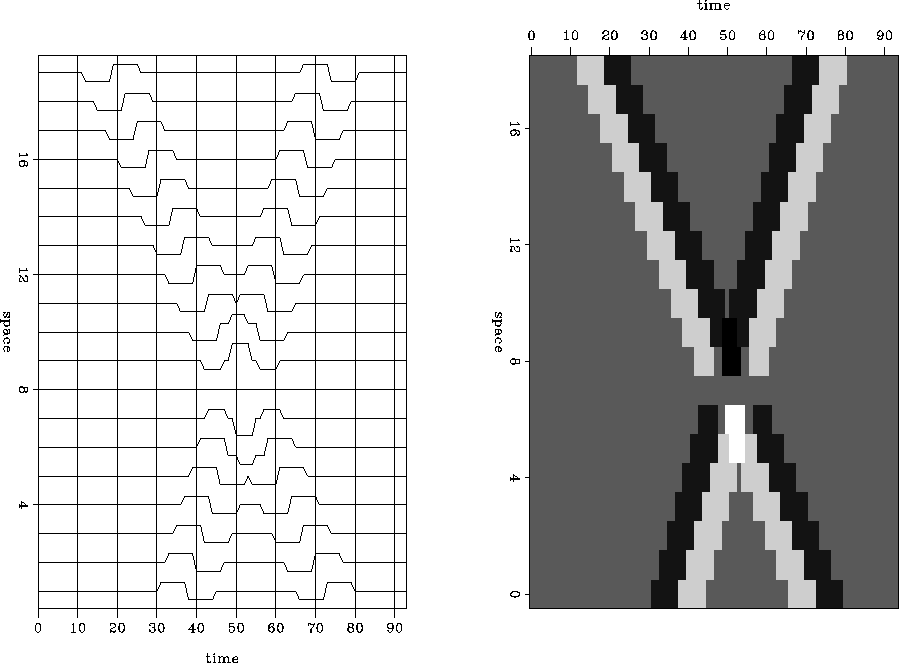If the first explosion were followed by an implosion of half-strength,
we would have ![]() .If pulses overlapped one another in time (as would be the case if B(Z)
had degree greater than 10),
the waveforms would simply add together in the region of overlap.
The supposition that they would just add
together without any interaction is called the ``linearity'' property.
In seismology we find that--although the earth
is a heterogeneous conglomeration of rocks of different shapes
and types--when seismic waves travel through the earth,
they do not interfere with one another.
They satisfy linear superposition.
The plague of nonlinearity
arises from large amplitude disturbances.
Nonlinearity is a dominating feature in hydrodynamics,
where flow velocities are a noticeable fraction of the wave velocity.
Nonlinearity is absent from reflection seismology
except within a few meters from the source.
Nonlinearity does not arise from geometrical complications
in the propagation path.
An example of two
plane waves
superposing is shown in
Figure 4.
.If pulses overlapped one another in time (as would be the case if B(Z)
had degree greater than 10),
the waveforms would simply add together in the region of overlap.
The supposition that they would just add
together without any interaction is called the ``linearity'' property.
In seismology we find that--although the earth
is a heterogeneous conglomeration of rocks of different shapes
and types--when seismic waves travel through the earth,
they do not interfere with one another.
They satisfy linear superposition.
The plague of nonlinearity
arises from large amplitude disturbances.
Nonlinearity is a dominating feature in hydrodynamics,
where flow velocities are a noticeable fraction of the wave velocity.
Nonlinearity is absent from reflection seismology
except within a few meters from the source.
Nonlinearity does not arise from geometrical complications
in the propagation path.
An example of two
plane waves
superposing is shown in
Figure 4.
|
super
Figure 4 Crossing plane waves superposing viewed on the left as ``wiggle traces'' and on the right as ``raster.'' |  |